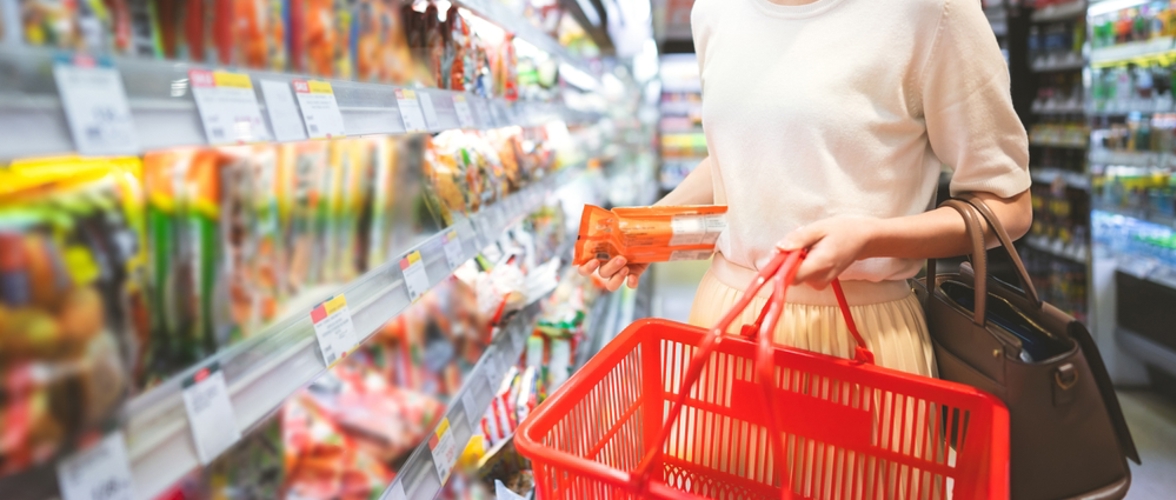In the wake of COVID-19, innovation is expected to be the dominant theme in the Supermarkets and Grocery Stores industry. Woolworth and Coles are expected to pursue new grocery delivery services, greater data analysis of consumer shopping habits, and enhanced customer experience to expand market share in 2021 and beyond.
‘Competition in the supermarkets industry remains fierce, and is likely to focus on capturing online market share in the year ahead. Woolworths has the lead at this point, but Coles is implementing new strategies to catch up,’ said IBISWorld Senior Industry Analyst Tom Youl.
Revenue for the Online Grocery Sales industry is rising at an accelerated rate, with Woolworths’ latest results showing a 91.8% increase in ecommerce revenue in the first half of 2020-21, to $1.8 billion. Coles ecommerce sales increased by 48% in the same period, to $1 billion. Woolworths has a store count of 1,052 relative to Coles’ 824, which allows Woolworths to expand its online grocery delivery market share more easily than Coles.

Online innovation
The scale and scope of online grocery shopping options is quickly expanding, providing an advantage to larger players relative to independent grocery stores. Online grocery ordering is forecast to become a widely adopted service over the next decade, rather than a niche offering for tech-savvy consumers.
Coles is currently constructing two automated warehouses in Melbourne and Sydney, to streamline online ordering and improve ecommerce efficiency. These warehouses are expected to deliver a wider range of products, with improved product freshness and more delivery windows. However, these facilities are unlikely to be operational before 2023. In contrast, Woolworths launched its first ecommerce fulfillment centre in October 2020, using automation to hasten the sorting, moving and picking of up to 10,000 grocery products.
‘Using automation to assemble online orders is likely to be a key point of focus for supermarkets in 2021 and beyond, due to the major efficiency gains that can be achieved. For example, a lower reliance on manual order assembly is likely to reduce wage costs for the Supermarkets and Grocery Stores industry, which are expected to account for 10.0% of revenue in 2020-21,’ said Mr Youl.

‘The transition to online shopping is also anticipated to support data-collection capabilities, enabling firms to leverage insights into consumer behaviour to drive additional sales. Consumer loyalty schemes will likely become more powerful, as firms use data collected through online-shopping behaviour to identify sales opportunities and drive consumer engagement,’ said Mr Youl.
Customer experience
Attempts to differentiate the shopping experience are also expected to accelerate in 2021 and beyond, including promotions such as Coles Little Treehouse book collectibles or the Woolworths Discovery Garden campaign.
‘While price competition is a key decider for where consumers shop, smaller factors such as popular collectibles campaigns can go a long way to both protect market share and attract new customers,’ said Mr Youl.
Supermarkets will also likely use in-store pop-ups, events and classes to enhance the consumer shopping experience and attract market share from competitors. For example, Publix Super Markets in Florida offers a range of cooking classes taught by local restaurant owners and celebrity chefs. Other classes cover cooking techniques, wine and beer pairings, and regional food.
COVID-19 recovery and outlook
Revenue in the Supermarkets and Grocery Stores industry is expected to grow at an annualised 2.0% over the five years through 2025-26, to reach $134.1 billion. Unlike the broader economy, supermarket operators have benefited from COVID-19 due to panic-buying, a need to cook at home rather than dine-out, and an increase in household discretionary income due to fiscal assistance measures. In 2020-21, revenue is expected to grow at an above-average 5.1%, to $121.6 billion. Profit has also surged over the past two years, rising to 4.5% of industry revenue in 2020-21.
However, revenue growth is expected to slow as the COVID-19 pandemic fades.
‘The removal of fiscal stimulus measures in 2021 is expected to reduce household disposable incomes, decreasing consumer expenditure at supermarkets. In addition, supermarkets have been supported by a need to shop local amid lockdowns in recent months. Going forward, this benefit is likely to be removed,’ said Mr Youl.
Revenue across the supermarkets industry is expected to grow at a below average 1.0% in 2021-22, to $122.7 billion.
Supermarkets have learned from the aggressive price discounting wars of the past five years, and will likely avoid inflaming a new price discounting war in 2021 and beyond. Instead, supermarkets are projected to focus on enhancing convenience and the customer experience to drive growth in market share and improve profit margins.
IBISWorld company reports used to develop this release:
IBISWorld reports used to develop this release:
For more information, to obtain industry reports, or arrange an interview with an analyst, please contact:
Jason Aravanis
Strategic Media Advisor – IBISWorld Pty Ltd
Tel: 03 9906 3647
Email: mediarelations@ibisworld.com






